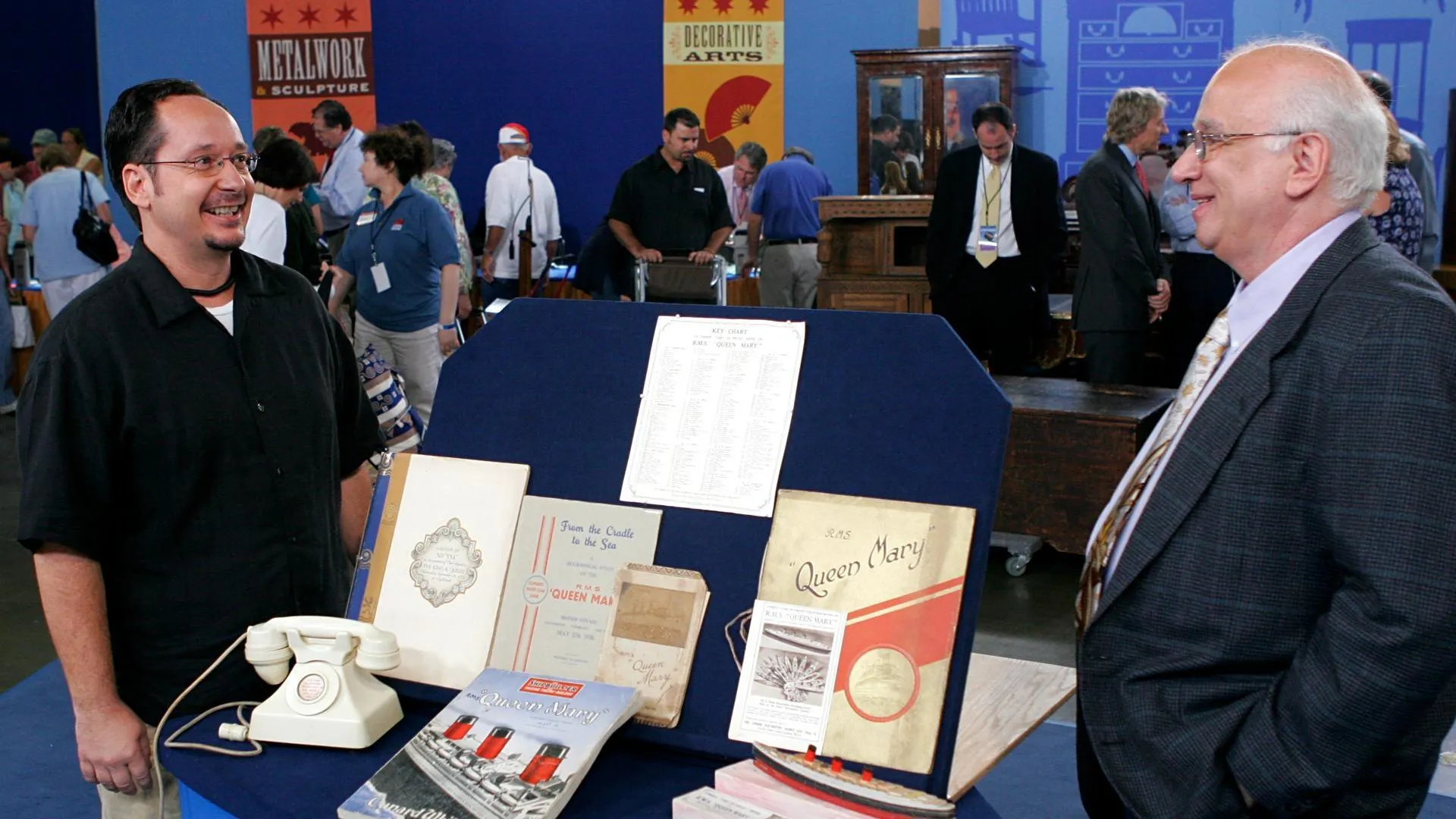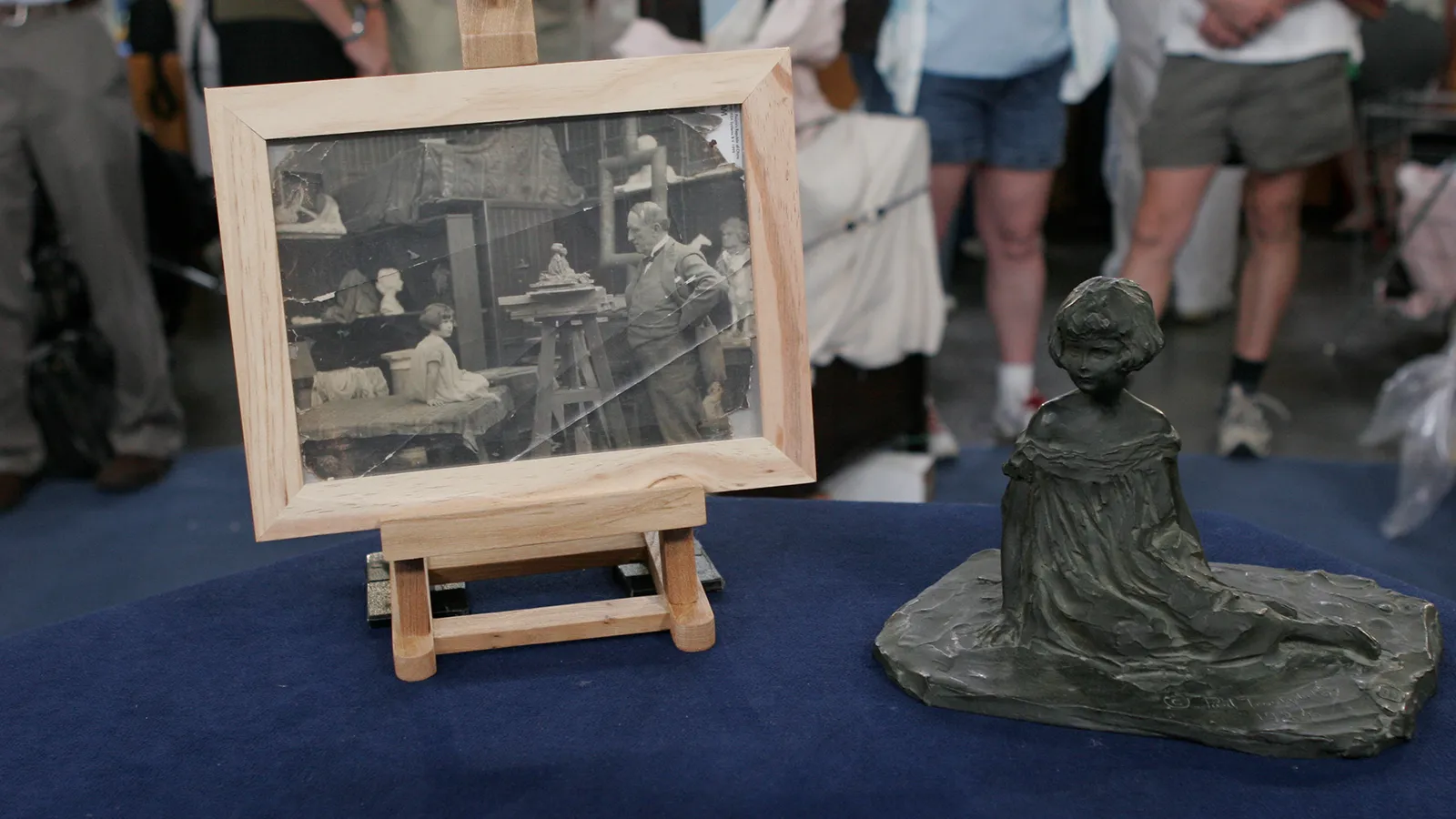GUEST: These were perfume bottles that were collected by my mother. I believe that she was given several as gifts from her mother, and they just are items that I have grown up with.
APPRAISER: And did your mother live here in Los Angeles?
GUEST: Yes, she was born in Los Angeles.
APPRAISER: Okay, so she probably collected them here? Or did she travel much?
GUEST: I believe her mother traveled, and that's why I believe several of the pieces may be from out of the country, but I do not have history specific to any of the pieces.
APPRAISER: Collecting perfume bottles is a very popular habit today, and it has been since your mother or even your grandmother's time. And people look for perfume bottles from the period that most of these represent, which is the interwar years, the '20s and '30s.
GUEST: Okay.
APPRAISER: They do all come from outside of the country, but you could have bought all of these in Los Angeles in the '20s and '30s, so...
GUEST: Oh!
APPRAISER: She may have picked them up locally.
GUEST: Okay.
APPRAISER: Starting, the one closest to you, that's a Bohemian bottle. Very typical of bottles made in what's now the Czech Republic. I would say, by the look of it, it's probably early '30s. That's quite a nice one, and it does have some value in the hundreds of dollars. In the center, you have some bottles which are very typical of Venetian glass. If you pick them up, you see they're very lightweight.
GUEST: Yes.
APPRAISER: Venetian glass has no lead in it. It's soft, so that you can work it into these pretty shapes. They're very characteristic of Venetian glass from the '20s. And again, they have some value in the hundreds of dollars. Then these two are made by René Lalique, the French company, which specialized at the time in making perfume bottles. In fact, Lalique really began his career as a glassmaker by making perfume bottles for François Coty.
GUEST: Okay.
APPRAISER: Around 1910. And you have two here, which are quite different. This one, and I'm gonna take the top off, because this top's in trouble.
GUEST: Yes.
APPRAISER: This happens a lot with perfume bottles. The stopper has been stuck in there, and someone's tried to force it out, perhaps, and they've broken it.
GUEST: Okay.
APPRAISER: But in this condition, with a broken stopper, I'm afraid it's worth about $100 at the most. Lalique did make a lot of perfume bottles, tens of thousands of them, before World War II, and many of them are actually not that valuable.
GUEST: Okay.
APPRAISER: If this one was perfect, it would only be worth maybe $400 or $500.
GUEST: Oh, okay.
APPRAISER: Even though it's from the '20s. This is a great one. A Lalique bottle made very early in René Lalique's glassmaking career. It was designed in 1912, and it's called Oreilles Épines, which means pine or briar, brambles, in the ears. See, it has these ears on it. It's exquisitely made in a way that Lalique kind of experimented with when he was an early glassmaker. It's actually quite complicated. The bottle itself is forced into a mold by pressing it down without the bottom being on it.
GUEST: Okay.
APPRAISER: Then the bottom is separately cast and stuck on. It's really the only way you could make a piece of glass that looks like this, and really, Lalique figured it out. He was a brilliant technician as well as a great designer. If this came to auction, I would estimate it to sell for between $30,000 and $40,000.
GUEST: Oh, my gosh.
APPRAISER: Lalique perfume bottles are very high in demand. And this particular one, unlike this one, is very low in supply.
GUEST: Okay.
APPRAISER: I've only ever seen two other of this example.
GUEST: Wow.












